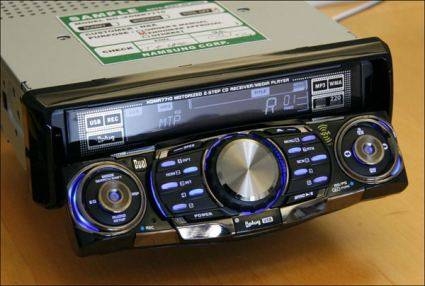
The head unit is essentially the command center of any car stereo. It is the device that rests on your dashboard that allows you to insert and play CDs, change the volume, tune radio stations and tell the time. The head unit processes any sound information, be it in the form of radio signals from an interior or exterior antenna, or from a CD, and coverts it into an electrical signal to send to the car's speakers.
The head unit is also the source of power for each of the speakers. When purchasing both, the amount of amps and watts each can output and process must be taken into consideration. A proper head unit should be able to power the speakers adequately in order to use them to their full potential.
The speakers in a car take an electrical signal that is being provided by the head unit and convert it back into sound. The volume can be adjusted by using either an appropriate knob or buttons on the head unit. Changes can also be made to the amount of base and treble being supplied by the speakers. The head unit makes these changes by adjusting the pitch and frequency output for the speakers.
Typically, a car will come standard with a four-speaker setup--two on the doors in the front of the car and two in the rear of the car, either on the back seat doors or on the back dash.
There are several components that are not necessary to successfully run a car stereo, but can add to the quality of sound output dramatically. An amplifier can be installed, which is used to supply a bit of extra power to each of the car's speakers. This can be necessary if your head unit cannot supply enough power to each of the speakers to use them to the best of their ability.
A sub woofer can also be installed. It is used to represent extremely low frequencies of sound that regular speakers cannot process. A sub woofer will add exponentially to the amount of base a car stereo is outputting.